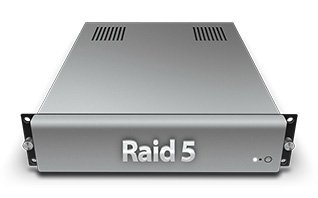Raid Data Recovery Bristol:
RAID (Redundant Array of Independent Disks) is a data storage configuration used for redundancy and performance in servers and storage systems. However, RAID arrays can experience data loss due to hardware failure, software corruption, or configuration errors. This guide covers the essentials of professional RAID data recovery services, detailing the types of RAID, common failure scenarios, and how our Raid Professional Services handle the recovery process. RAID data recovery services help restore data from failed RAID arrays, whether due to hardware malfunctions, software errors, or configuration issues. RAID systems are highly complex, and professional recovery services utilise specialised tools to reconstruct RAID configurations, ensuring a secure and effective recovery process.
Introduction to RAID Data Recovery
RAID arrays are designed for redundancy and high-performance data storage, often used in enterprise environments. However, RAID failure can lead to significant data loss, downtime, and operational disruptions. Our Professional RAID recovery services restore lost data without compromising system integrity, addressing issues from controller failures to multiple drive malfunctions.
Types of RAID Configurations
- RAID 0: Stripes data across multiple disks for high performance but lacks redundancy. Data loss is common if one drive fails.
- RAID 1: Mirrors data across drives for redundancy. Recovery is possible from a single drive if the other fails.
- RAID 5: Stripes data with parity, providing fault tolerance for one drive failure.
- RAID 6: Similar to RAID 5, but includes an additional parity block, allowing for up to two drive failures.
- RAID 10 (1+0): Combines mirroring and striping for increased redundancy and performance but requires at least four drives.
Each RAID type has unique data recovery needs, especially during drive rebuilds and parity reconstructions.
Common RAID Failure Scenarios
RAID arrays can fail for a variety of reasons:
- Hardware Failures: Individual drives can fail due to wear, mechanical issues, or physical damage.
- RAID Controller Failure: A failed RAID controller can make the entire array inaccessible.
- Multiple Drive Failures: In arrays like RAID 5 and RAID 6, multiple drives failing simultaneously may lead to data loss.
- Rebuild Errors: RAID rebuilds after drive replacement can go wrong, resulting in corrupted data or lost RAID configurations.
Understanding the cause of RAID failure is critical for implementing the correct recovery strategy.
Types of RAID Data Recovery Services
Logical Data Recovery
Logical recovery addresses non-physical issues, such as software corruption or accidental deletion, without needing hardware repair. Logical recovery is often used when the RAID is accessible but data is missing or corrupted.
Physical Data Recovery
For physical damage, data recovery specialists conduct repairs on individual drives in a cleanroom environment. Damaged components, like the actuator arm or read/write head, may be replaced to facilitate data extraction.
Firmware Repair
Firmware issues in the RAID controller or individual drives can cause inaccessibility. Our Raid Recovery specialists may reprogram or replace the firmware to access the data.
The RAID Data Recovery Process
- Diagnosis and Assessment: The RAID array is evaluated to determine the extent of damage and type of failure.
- Drive Imaging and Cloning: Each drive in the RAID is cloned to create a backup before data extraction, preserving original data.
- Data Reconstruction and Verification: RAID configurations, such as stripe size and parity, are analysed and reconstructed to restore data in its original form.
Logical Data Recovery for RAID Arrays
Logical recovery techniques restore data lost due to:
- File System Corruption: Tools reconstruct file systems to make files accessible.
- Software Errors: Misconfigured RAID software is corrected to regain data access.
- Accidental Deletion: Deleted files within the RAID array can often be recovered if they haven’t been overwritten.
Physical Data Recovery for Damaged RAID Disks
Physical recovery includes:
- Drive Component Repair: Individual drives are repaired to extract data in cases of mechanical damage.
- Cleanroom Environment: Drives are handled in cleanrooms to prevent contamination and further damage.
- Data Extraction from Failed Drives: Data is extracted using forensic imaging tools to minimise risks.
RAID Controller and Firmware Issues
RAID recovery services address issues with RAID controllers and firmware through:
- Controller Failure Solutions: Replacing or repairing the RAID controller to restore functionality.
- RAID Firmware Repair: Repairing or reprogramming firmware issues within individual drives or the RAID controller.
- RAID Reconfiguration: Rebuilding RAID parameters based on stripe size, parity, and drive order to restore data access.
Specialised Raid Tools for RAID Recovery
Our Professional RAID recovery services use specialised tools:
- RAID Rebuild Software: Software reconstructs the RAID configuration based on parity data and drive order.
- Forensic Imaging Tools: These tools image each drive sector-by-sector to create safe copies of the data.
- Hardware Analysis Tools: These tools are used to examine failed components and identify points of failure.
Benefits of Professional RAID Recovery Services
Our Professional RAID recovery services provide multiple benefits, including:
- High Success Rates: Recovery Raid specialists have expertise and tools that increase recovery success.
- Data Security and Privacy: Our Highly Reputable Raid Services use secure handling and storage protocols to protect client data.
- Reduced Downtime: Our Professional Raid recovery services work quickly to reduce the downtime associated with RAID failure.
FAQs on RAID Data Recovery Services
Can all RAID failures be recovered?
Not all RAID failures are recoverable, especially in cases of extensive physical damage or overwritten data. However, our professional raid recovery services have high success rates for most failure types.
How long does RAID recovery take?
The time required for RAID recovery depends on the RAID type, failure complexity, and data volume, typically ranging from 2 days to 2 weeks.





